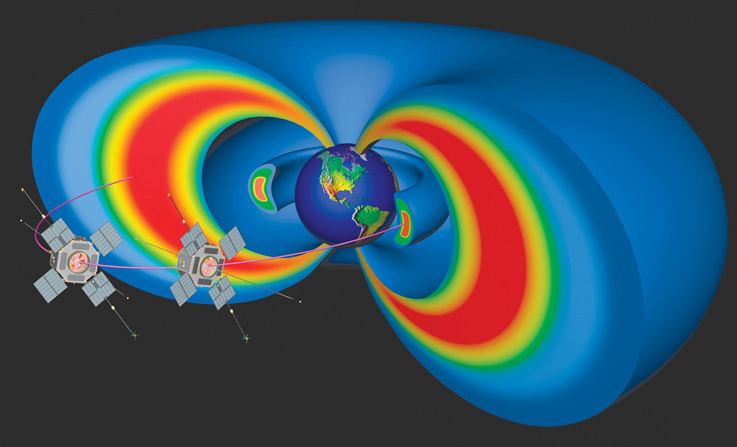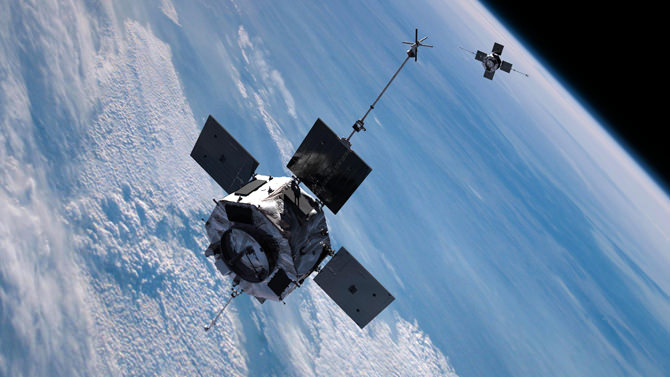After nearly a week of weather and technical delays, NASA’s Radiation Belt Storm Probes (RBSP) launched in the early morning skies from the Cape Canaveral Air Force Station in Florida at 4:05a.m. EDT (08:05 GMT) on Thursday, August 30, 2012. This will be the first twin-spacecraft mission designed to explore our planet’s radiation belts.
“Scientists will learn in unprecedented detail how the radiation belts are populated with charged particles, what causes them to change and how these processes affect the upper reaches of the atmosphere around Earth,” said John Grunsfeld, associate administrator for NASA’s Science Mission Directorate at Headquarters in Washington. “The information collected from these probes will benefit the public by allowing us to better protect our satellites and understand how space weather affects communications and technology on Earth.”
The two satellites, launched from an Atlas V rocket from Space Launch Complex-41, each weigh just under 680 kg (1,500 pounds) and comprise the first dual-spacecraft mission specifically created to investigate this hazardous regions of near-Earth space, known as the radiation belts. These two belts, named for their discoverer, James Van Allen, encircle the planet like donuts and are filled with highly charged particles. The belts are affected by solar storms and coronal mass ejections and sometimes swell dramatically. When this occurs, they can pose dangers to communications, GPS satellites and human spaceflight
Artist’s conception of RBSP satellite. Image courtesy of Johns Hopkins University Applied Physics Laboratory
“We have never before sent such comprehensive and high-quality instruments to study high radiation regions of space,” said Barry Mauk, RBSP project scientist at the Johns Hopkins University’s Applied Physics Laboratory (APL) in Laurel, Md. “RBSP was crafted to help us learn more about, and ultimately predict, the response of the radiation belts to solar inputs.”
The hardy RBSP satellites will spend the next 2 years looping through every part of both Van Allen belts. By having two spacecraft in different regions of the belts at the same time, scientists finally will be able to gather data from within the belts themselves, learning how they change over space and time. Designers fortified RBSP with special protective plating and rugged electronics to operate and survive within this punishing region of space that other spacecraft avoid. In addition, a space weather broadcast will transmit selected data from those instruments around the clock, giving researchers a check on current conditions near Earth.
“The excitement of seeing the spacecraft in orbit and beginning to perform science measurements is like no other thrill,” said Richard Fitzgerald, RBSP project manager at APL. “The entire RBSP team, from across every organization, worked together to produce an amazing pair of spacecraft.”
The first RBSP spacecraft separated from the Atlas rocket’s Centaur booster 1 hour, 18 minutes, 52 seconds after launch. The second RBSP spacecraft followed 12 minutes, 14 seconds later.
During the next 60 days, operators will power up all flight systems and science instruments and deploy long antenna booms, two of which are more than 54 yards long. Data about the particles that swirl through the belts, and the fields and waves that transport them, will be gathered by five instrument suites designed and operated by teams at the New Jersey Institute of Technology in Newark; the University of Iowa in Iowa City; University of Minnesota in Minneapolis; and the University of New Hampshire in Durham; and the National Reconnaissance Office in Chantilly, Va. The data will be analyzed by scientists across the nation almost immediately.


